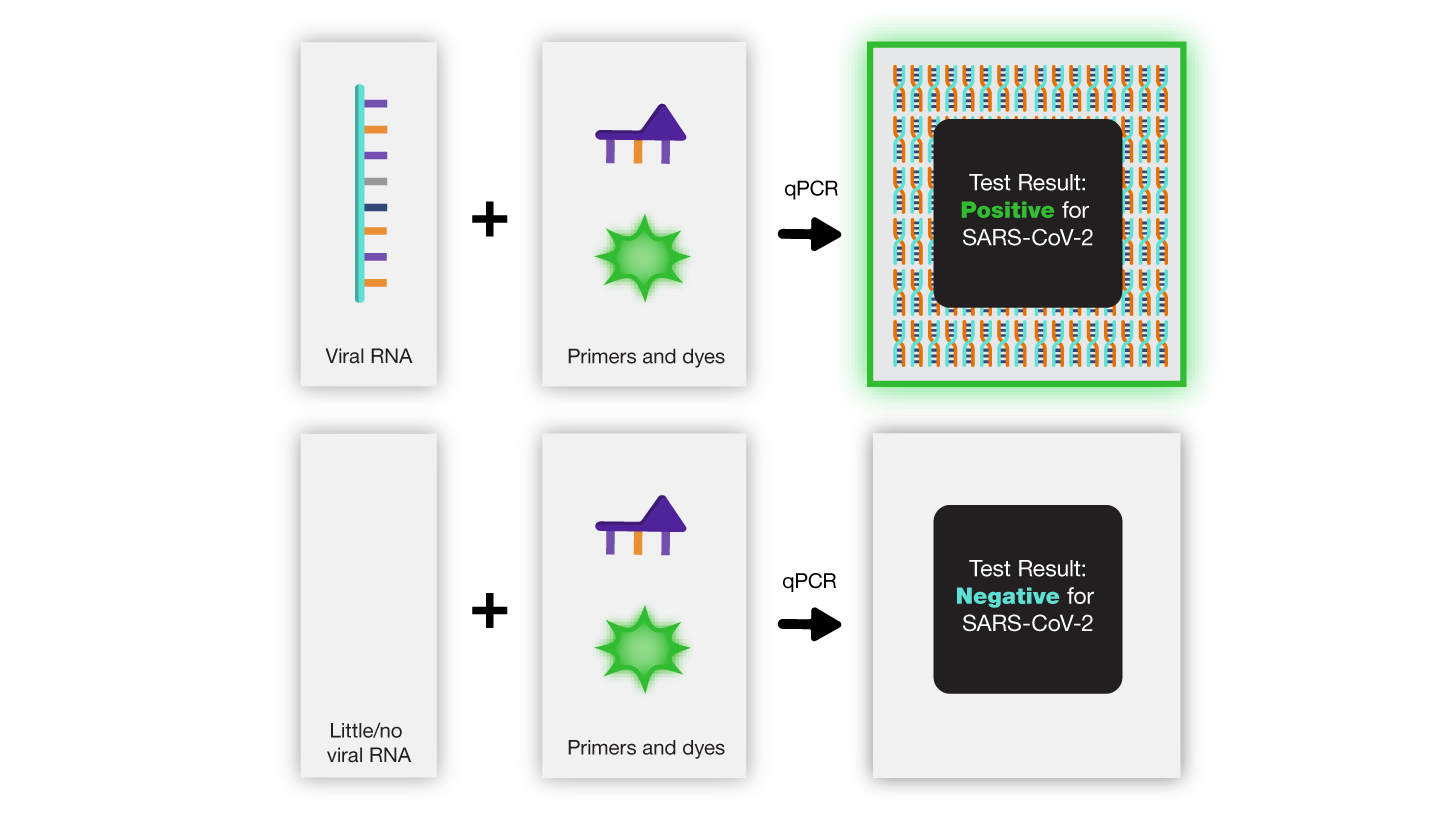What does a positive PCR test for COVID-19 look like?
This COVID-19 test uses a technique called PCR (polymerase chain reaction). It works by testing for COVID–19 viral genetic material called RNA.

COVID-19 PCR amplification
A PCR test is the ‘gold standard’ for COVID-19 testing. PCR tests are a type of nucleic acid amplification test (NAAT) that takes a small sample of genetic material and copies it multiple times. This process is called amplification.
A COVID-19 PCR test uses samples taken from the nose and throat. In a PCR test, substances known as reverse transcriptase or DNA polymerase are added to the sample in a lab. These substances work to make numerous copies of any viral RNA that may be present.
A positive test means viral genetic material is present. The test is most accurate when done within 7 days of symptoms starting. A positive test result taken at that time indicates infection.
Why is a COVID-19 PCR test done?
PCR is the most reliable and accurate test for detecting active infection. This is why it is done. In other words it is used to check the result of a COVID-19 lateral flow test (LFT). That has the advantage of being able to be done in 10 minutes at home (but is less accurate).
Pros and cons of a COVID-19 PCR test
Amplifying the genetic material makes detecting even the smallest amount of a virus easy. PCR tests can also differentiate between different virus variant (or strains). Since these tests examine microscopic bits of a virus’s genetic material, they are highly reliable – often close to 100%.
The drawback of the PCR process is the time it takes and the fact that lab analysis is required to get results. The average turnaround time for PCR test results is two to three days after the lab receives your sample.
A PCR test is not perfect
False positive results occur – i.e. the test is positive but you do not have the infection. This might happen for various reasons such as contamination of the sample.
False negative results also occur – i.e. the test is negative but you are infected. Again, this might be due to several reasons such as the sample not having been taken correctly.
Summary
We have described what does a positive PCR test for Coronavirus-19 look like. We hope it has been helpful.

